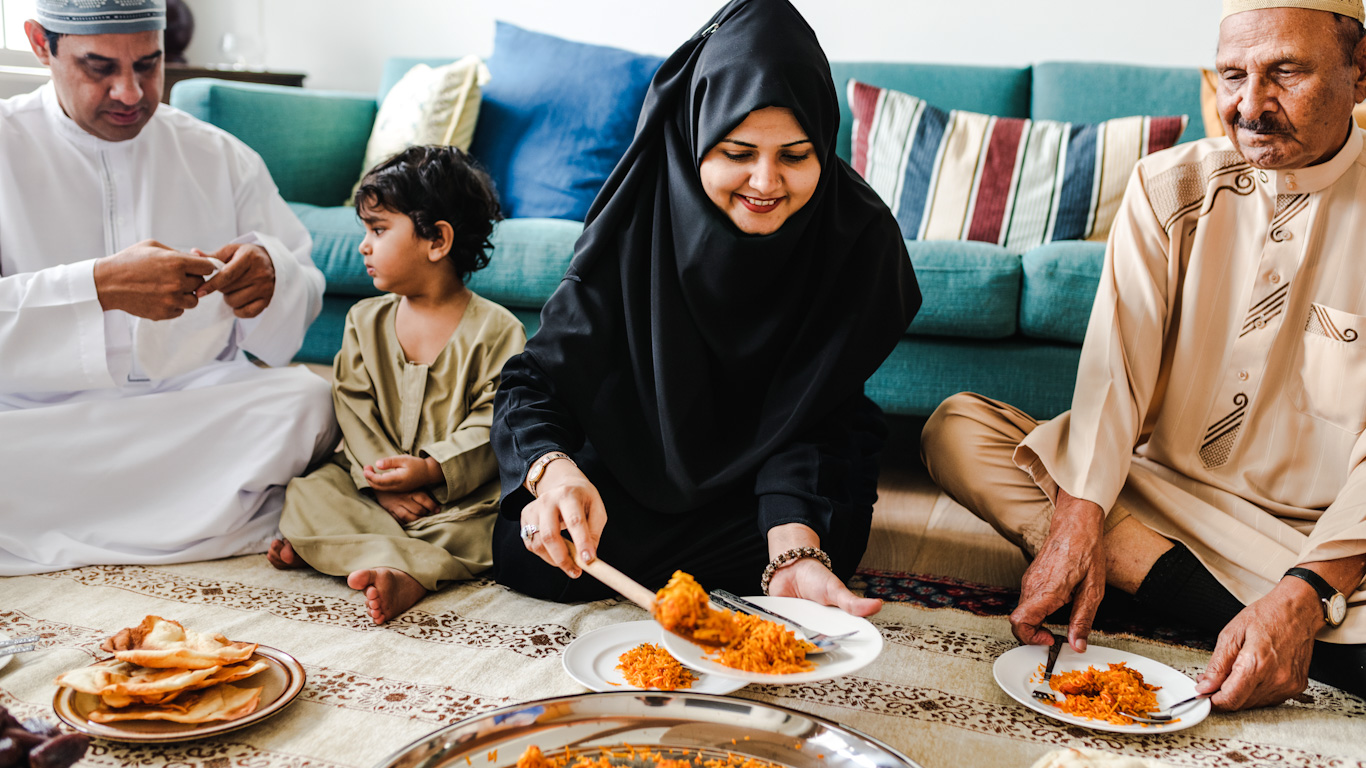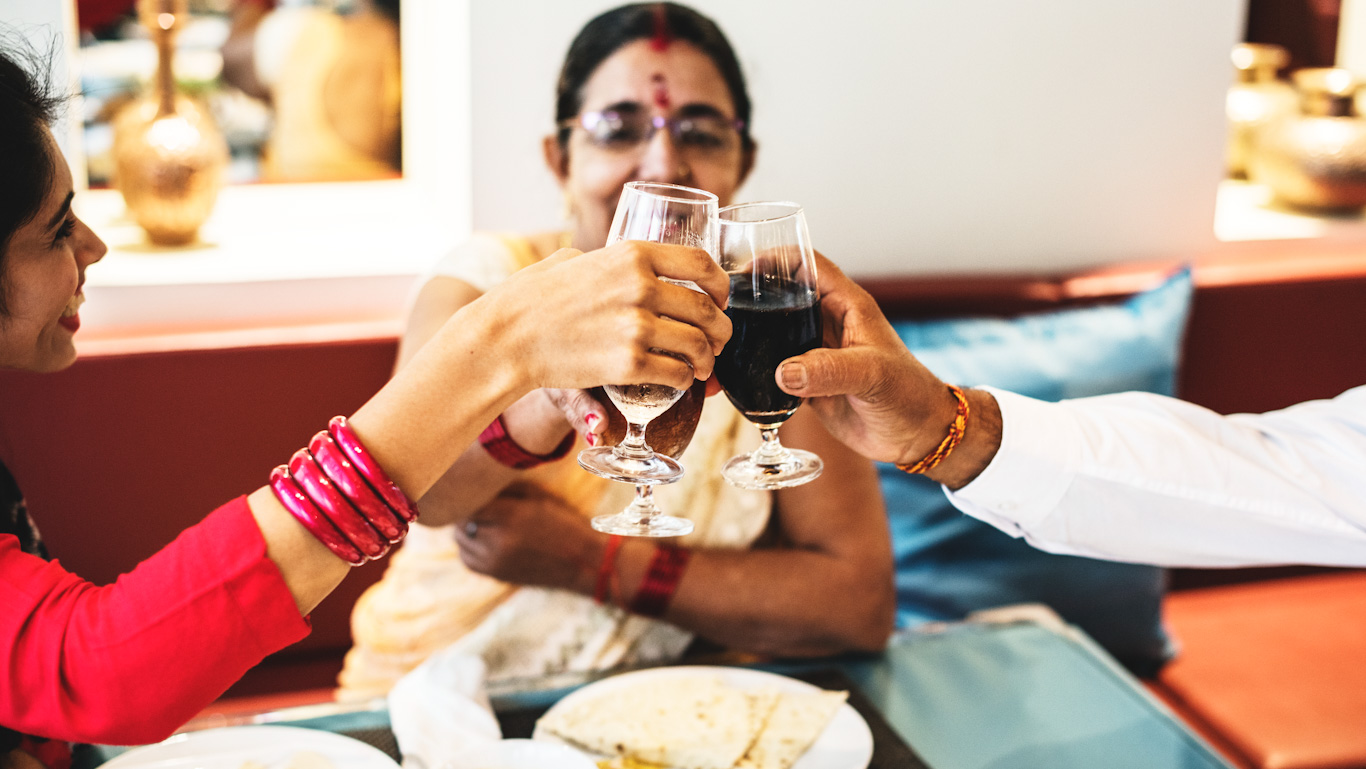You have been invited to eat in an Indian home...and you don't know where to start? You're in the right place, in this article I explain you everything about table etiquette and those details that you can't overlook if you want to be the perfect guest in the eyes of your Indian friends (and especially their families).
Never go as a guest empty-handed
Indians are very hospitable and dedicated in everything they do. They have a motto "Atithi Devo Bhav" , which means "The guest is a God.". If you have been invited to lunch and they open the doors of their home, never go empty-handed. You can offer some sweets, flowers or even something typical of your country.
Keep in mind that wine consumption is not widespread in Indian households for meals, so perhaps a bottle of whiskey will be a better choice. Before offering alcohol as a gift, remember that Muslims do not drink and some Hindus do not drink either, so such a gift may offend them.
Arriving at the host's home
Greet all members of the family, surely you have several generations in front of you Pay special attention to the mother and grandmother of the family. , since they are the main hostesses and surely the ones who have dedicated their time to prepare this feast.
Please note that the meal will not start immediately when you arrive. The celebration begins with drinks (with or without alcohol, depending on the host's traditions) and several typical snacks accompanied by a pleasant conversation , where you will be the center of attention.
Once they indicate that they are ready for the meal, you should go wash your hands and wait to be told where to sit (this point of table etiquette is very important). In some homes they enjoy their meals the western way at a table and sitting comfortably on chairs but in many other homes they eat sitting on the floor with their legs crossed.
Eating on the Floor
In India as well as in Pakistan and Bangladesh it is typical to eat on the floor. You can sit cross-legged in the lotus position directly on the floor or on a cushion.

Today most Indian families in the cities enjoy their meals at the table but in rural areas people still eat on the floor.
Service Protocol (table etiquette)
In Indian homes always serve the guest first, the men are next and then the children are served. The women are usually the last to eat and even in many houses they eat when the rest of the table has finished since they are the ones who make sure that all the diners have enough food at all times. They also usually make the breads (chapati) homemade at home and are served freshly made.
You will probably be offered cutlery but if all the diners eat with their hands, I recommend you do the same as they will value it as a sign of respect for their traditions. Don't miss this article with everything you need to know about the art of eating with your hands following Indian protocol.
The dishes
In India there is no custom of serving a starter, a main course and a dessert. Their meals are much more varied with multiple dishes to combine. Normally all the delicacies are served in the center of the table to share.
Indian home-cooked meals usually consist of: Rice, Chapati or Naan (there are many varieties of breads), vegetables, pulses, meat, salad, raita (dressed yogurt), pickles and chilies.
Normally the meal ends with dessert and some digestive snacks (fennel seeds dipped in sugar are very typical). In addition to coffee or tea. The coffee with cardamom that they make in South India is sublime, and what can I say about the Masala chai , "tea with spices" typical of the north... a real pleasure for the senses.
Dietary restrictions according to religion
India is an incredibly culturally diverse country with an incredible the different religions mark large differences cultural including eating habits:
- Muslims do not eat pork nor do they drink alcohol.
- Hindus don't eat veal and depending on the caste to which they belong, many are vegetarians.
- The Sikhs, as well as the Hindus, do not eat veal.
Don't leave anything on the plate (the most important thing about table etiquette).
You don't need to try everything if you don't want to, but it is very important that you do not leave anything on the plate at the end of the meal as it is an offense and does not follow the rules of good table etiquette and protocol.
Also if you eat too fast you may appear rude and if you eat too slowly it gives the image that you are not liking the food.
Punctuality
Although for Westerners it is very important, for Indians it is not paramount (their concept of time is quite different).
If you arrive 10-15 min late you are perfectly in tune with Indian customs and thus give them a few more minutes to finish the meal preparations. But never arrive before the time of the appointment (they are not so used to that)!
The host will always offer you more food
He will want you to try all of his dishes and will insist that you allow him to serve you more food. They do this as a sign of affection and respect for their guest. When you feel you are full, do not be afraid to say no. It is not rude to say that you do not want any more but leaving food on your plate if you can't finish it later is.
Praise to the host (very important point of table etiquette).
Do not forget to praise the host for the delicacies you have shared. If there is one thing Indian women love, it is to be praised for the food they put so much time and care into preparing.
Use of the left hand
When you greet someone with your hand or when you give something to another person, always do it with your right hand since the left hand is considered impure.
I hope that with these tips on table etiquette and protocol you will find it easier to enjoy the meal and look like a real maharaja in front of your Indian hosts :)

